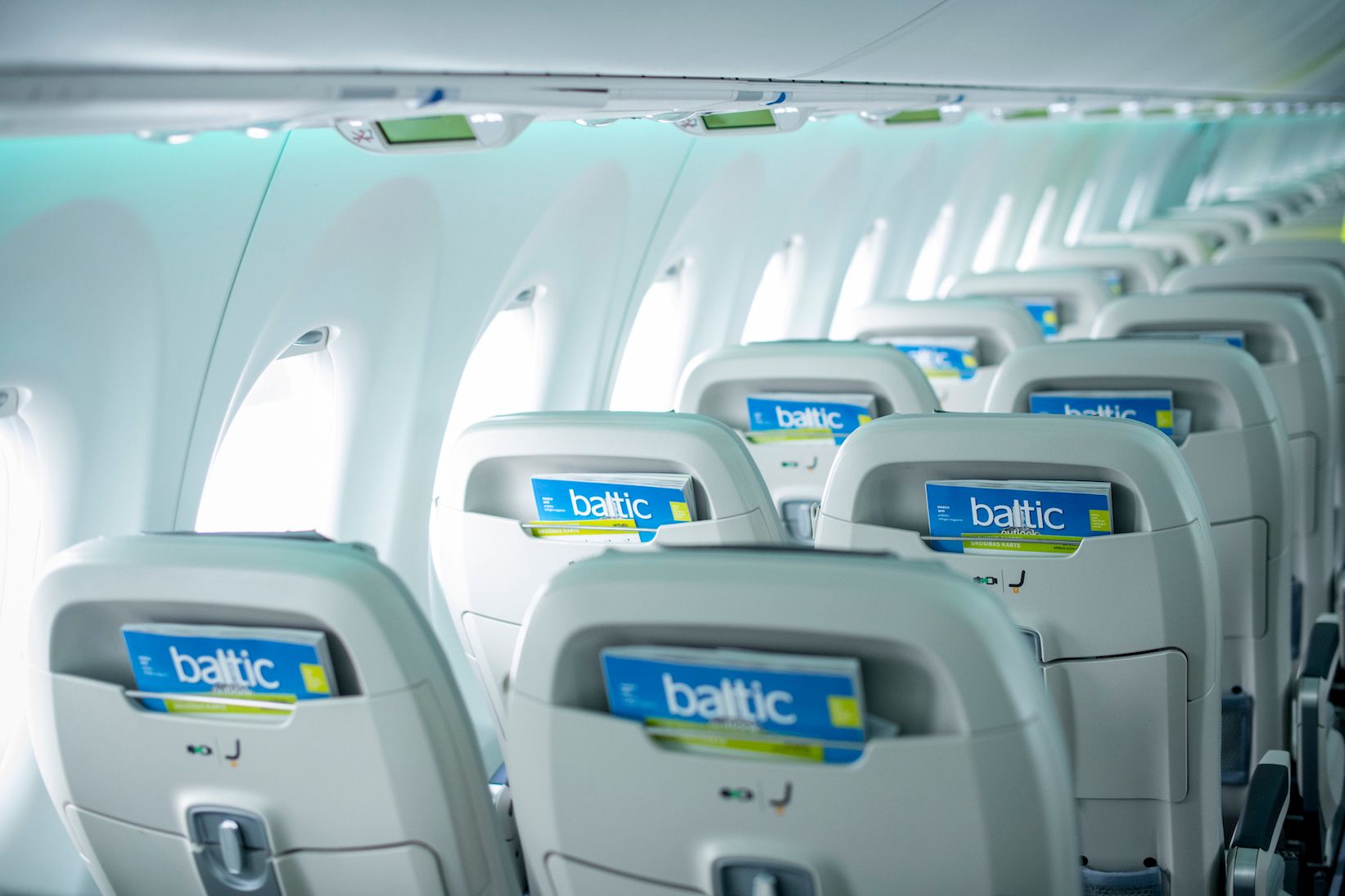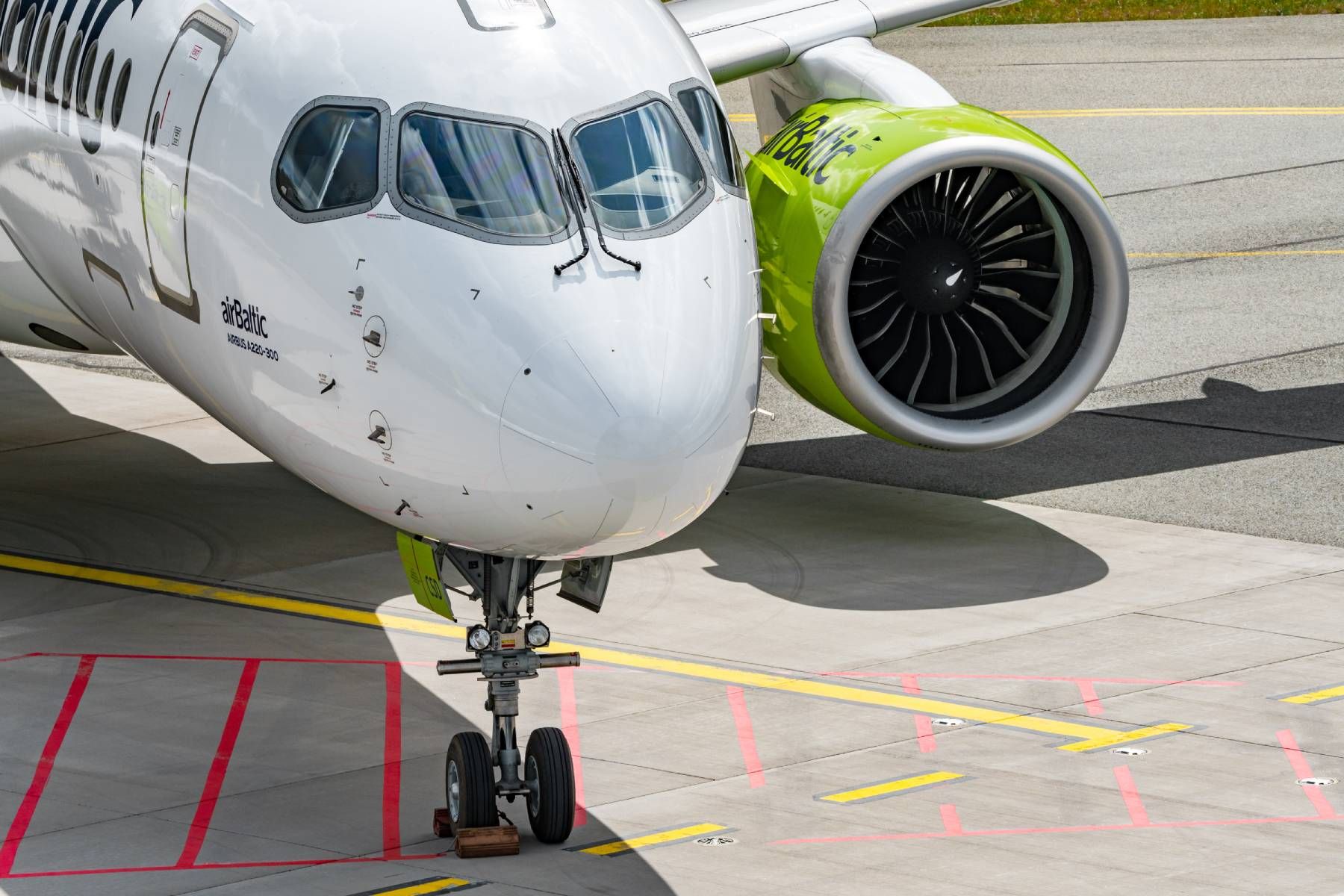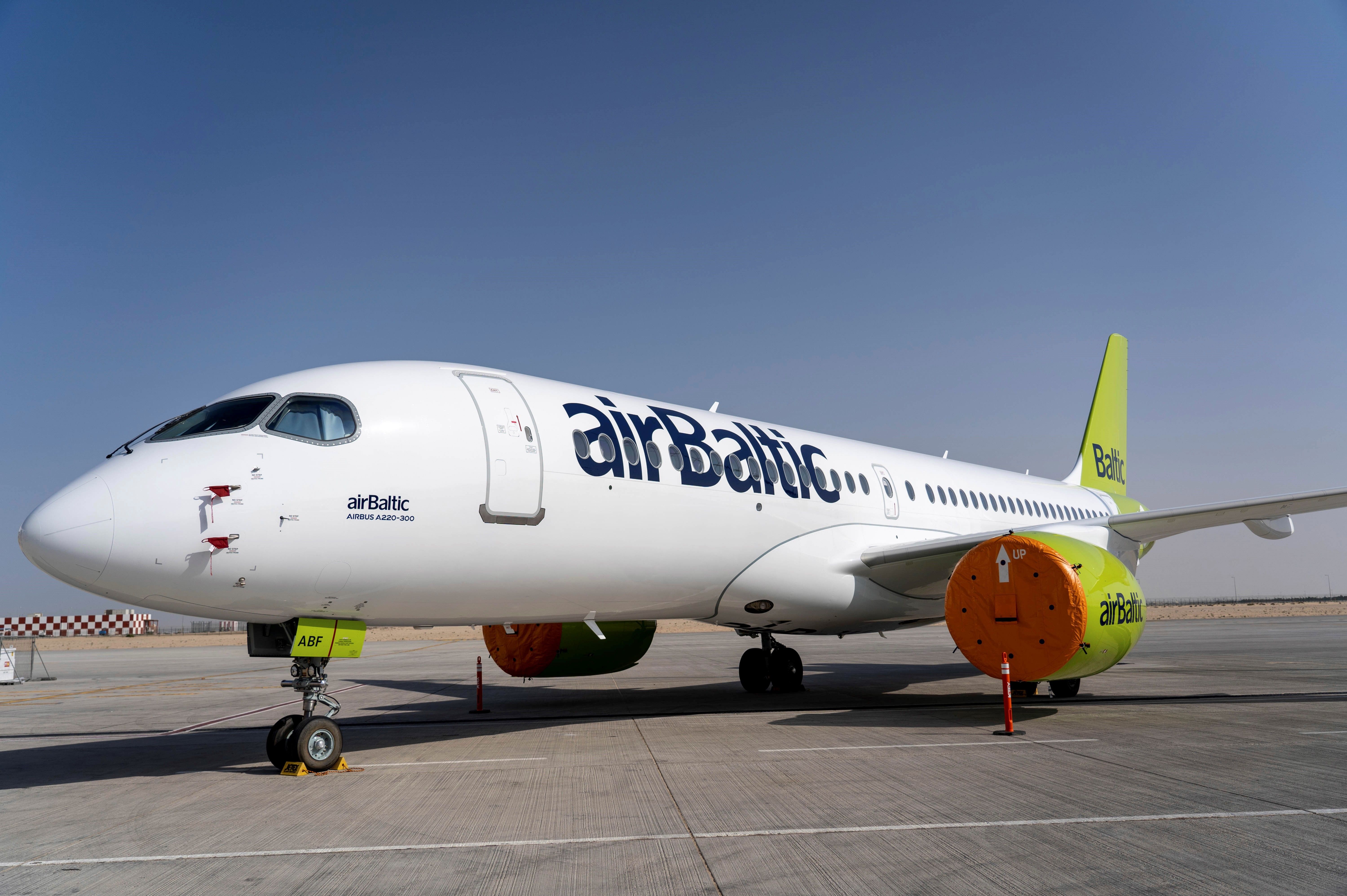Latvian airline airBaltic has received approval to increase the seating capacity on its Airbus A220-300 fleet to 149 passengers. With the first aircraft featuring the increased capacity recently delivered, the airline seeks to introduce increased commonality across its fleet to maximize potential operating revenues.
More seats per plane
airBaltic, the Riga, Latvia-based carrier, has announced that it has just received the approvals required to operate its Airbus A220-300 fleet of aircraft with a seating capacity of 149. This represents an increase of four seats over its previously-used configuration of 145 seats in a single-class layout. This change in the certified maximum passenger capacity means that the airline can unblock seats in its aircraft cabins that were up until now unavailable for passenger usage.
Following the delivery of its newest aircraft in February of this year (registration YL-ABG), the airline is now permitted to carry the maximum number of passengers (149) across its fleet of 33 A220-300s, the only type of aircraft in the airline's fleet.
Changes are well underway
The company has already changed the cabin configuration of five of its aircraft so far. The airline intends to unblock the additional seats on its entire fleet by summer 2023.
Due to reasons relating to specific internal layouts and the location of galleys, toilets, and emergency exits, some of the carriers' older planes will be limited to 148 useable seats. This slightly lower capacity will be rolled out across the airline's first 20 A220s that were delivered to the carrier. However, the 148-seat still represents an increase of three seats over the previous configuration deployed across the fleet since the first of the type arrived with the airline at the end of 2016.
The next 12 aircraft currently in operation with airBaltic feature a slightly different internal configuration, meaning that the new maximum of 149 seats can be used on each flight. The latest aircraft delivered also features this new layout. Although the new higher capacity has been approved, in the interests of commonality across the majority of its fleet, all remaining aircraft due for delivery between 2022 and 2024 will feature the 148-seat configuration.
Announcing the certification changes, Martin Gauss, Chief Executive Officer of airBaltic, said,
"In late February, we received our first airBaltic Airbus A220-300 aircraft, certified to operate up to 149 seats. Until now, we could use 145 seats on the aircraft. However, going forward, the existing fleet will be adjusted to use the additional capacity, which will further drive the efficiency of our operations."
Since May 2020, airBaltic has operated all its flights with just a single aircraft type, the Airbus A220-300. This has allowed the airline to benefit from multiple benefits related to operating a single aircraft type. These benefits include minimizing the complexity of operations and benefiting from the additional efficiencies provided by the aircraft. It also offers substantial cost-saving opportunities, including crew training, maintenance provision, and the holding of aircraft spares.
The Airbus A220-300 has performed beyond the company's expectations since its introduction back in 2016. The airline states that the plane delivers better overall performance, fuel efficiency, and high comfort levels and convenience for both passengers and staff. Particularly, airBaltic's fleet of A220s offers passengers an enhanced flying experience with such benefits as wider seats, larger windows, more hand luggage space in the cabin, and improved bathroom facilities.
Dedicated to the A220-300
AirBaltic is currently one of Europe.s leading users of the A220 aircraft, with 33 aircraft in its fleet. According to planespotters.net, the first of these was delivered in November 2016, giving it a current age of 5.4 years. The latest was delivered in February of this year, making it just over a month old at the time of writing. The average age for the fleet is just 2.8 years.
Proud of its green credentials
From an environmental perspective, airBaltic is proud to boast about the A220's 'green' credentials. The A220 has a high-quality air filtering system equipped with a High-Efficiency Particulate Air (HEPA) type filter that provides a high level of filtration for recirculated cabin air from boarding, during the entire flight and until all passengers have left the aircraft. The quality of cabin air is carefully controlled and is recirculated with ventilation rates that provide a total change of air 20-30 times each hour.
In addition, the A220 is also considerably quieter – with a four times smaller noise footprint. Moreover, at the moment, it is the greenest commercial aircraft in the world, as it is the first aircraft to have a transparent declaration of the life-cycle environmental impact, helping to reduce carbon dioxide and nitrous oxide emissions by 20% and 50%, respectively.
Thriving as demand for travel rebounds
airBaltic appears to be achieving highly despite the ongoing issues impacting the commercial aviation industry. In 2021, the airline flew over 1.62 million passengers, representing an increase of 21% over the previous year. It also hired an additional 559 additional staff during 2021 to meet the rising demand for its services and is opening a base in Finland.
The airline has had two A220s operating on behalf of Eurowings out of its Stuttgart base over the past winter. It is also keen to explore further wet lease opportunities as European airlines recover and expand following the COVID-19 pandemic. In their distinctive light green and white livery, the airline's aircraft have also been flying on behalf of SAS recently, operating flights for the Scandinavian carrier from its bases in Stockholm and Copenhagen.
There have also been recent mutterings regarding the airline possibly considering joining Star Alliance to promote itself and its operations on a global stage. During a recent exclusive interview with Simple Flying, airBaltic's CEO Martin Gauss commented that his airline could potentially be pondering leaving its alliance-free existence.
Onwards to the future carrying more passengers
The future certainly looks to be bright for the airline from Latvia. And with the ability to carry an extra 3-4 passengers on every flight it operates, the airline will be hoping that this will positively impact the airline's financial results going forward.

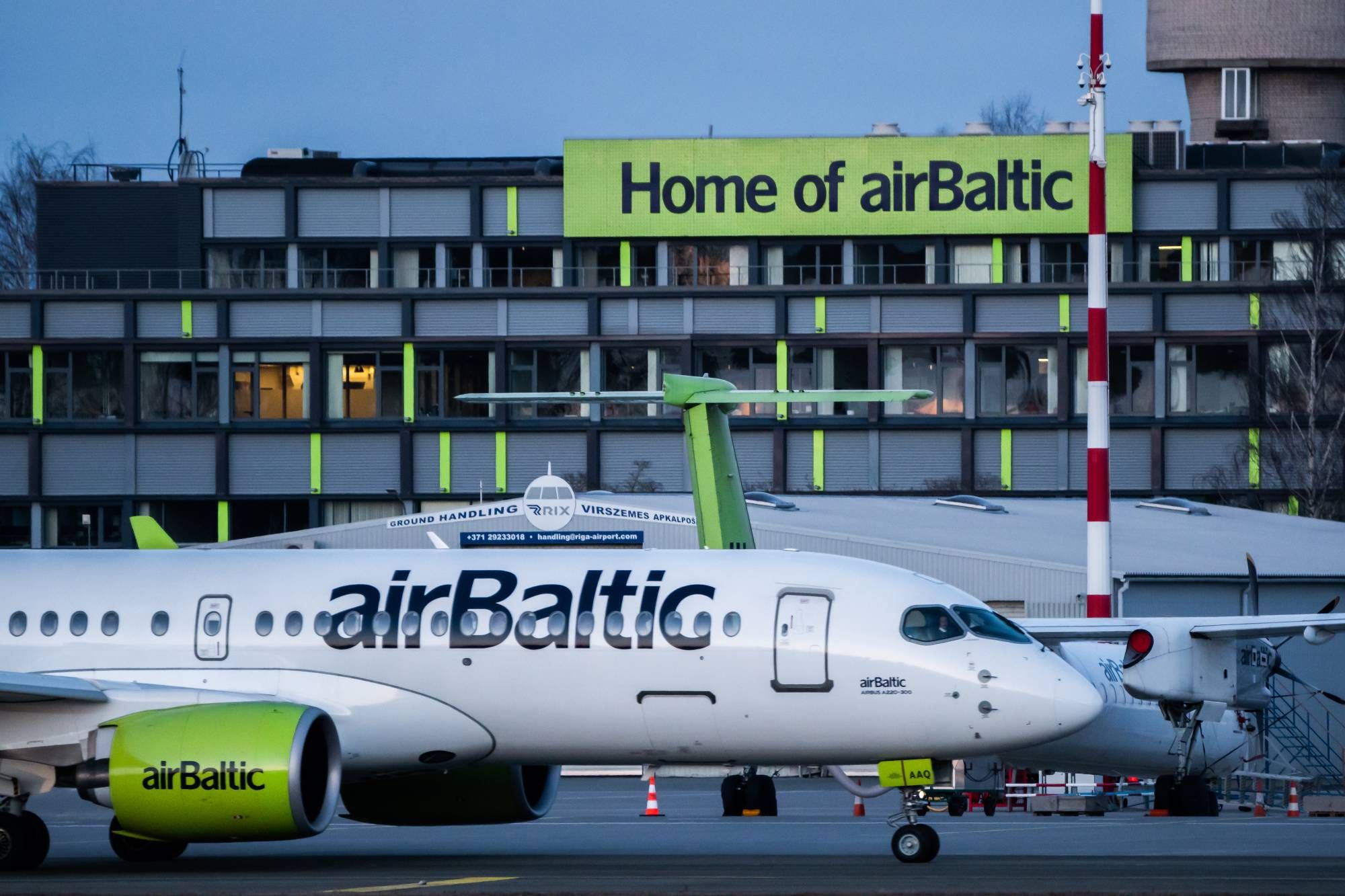
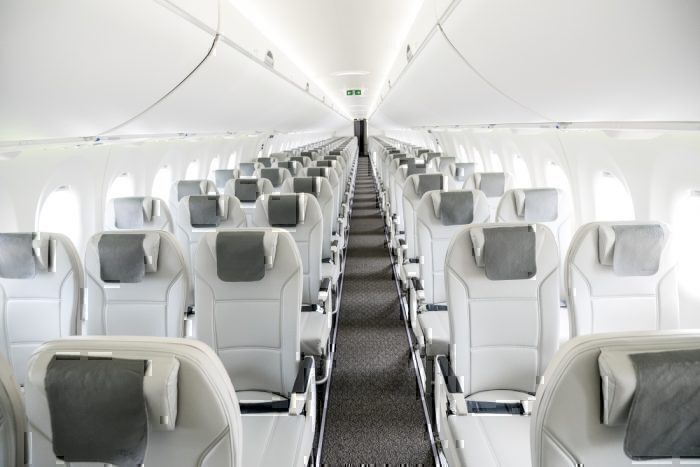
.jpg)
